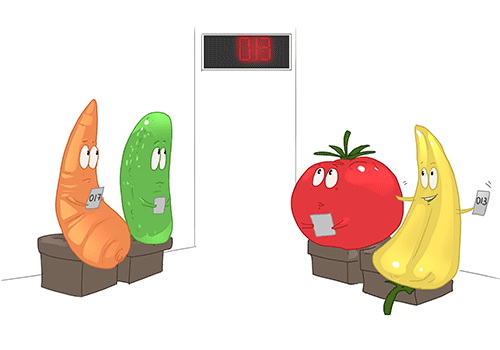Russian
Русский язык
Русский язык
> 150,000,000
Russia, Belarus, Kazakhstan, Kyrgyzstan, Tajikistan
Ukraine, USA, Romania
Uzbekistan, Israel, Latvia, Moldova, Turkmenistan, Germany, Canada, Brazil, Finland, Lithuania, France, Australia, United Arab Emirates, Cuba, UK, Estonia, Azerbaijan, Georgia, Armenia, Norway


According to the data of European Commission Russian language is spoken by 6% of the EU population (~ 30 million people). It is the seventh most widely used language in the EU and the eighth in the world.
Verbs in Russian are divided into two categories called aspects depending on whether they refer to an ongoing process (imperfective verbs) or a finished action (perfective verbs). Imperfective verbs have three tenses (past, present and future) while perfective verbs have only past and future tenses but no present tense.
| Past | Present | Future |
|---|---|---|
|
Что делал?
What did you do?
Я писал письмо
I was writting a letter. (We don’t know if he finished writing it or not.)
|
Что делаю?
What am I doing?
Пишу
I am writing.
|
Что буду делать?
What will I do?
Буду писать
I will write. (Again, we don’t know if he will finish writing the letter or leave it half-finished.)
|
|
Что сделал?
What have you done?
Написал
I have written.
|
- |
Что сделаю?
What will I do (to the end)?
Напишу
I will write (to the end).
|
There are 6 cases in Russian. They are shown by endings and indicate the role the noun plays in a sentence and have corresponding question forms of the type 'who' 'whom'. Nouns and noun-like words are grouped into declinations according to the particular forms of endings used.
The Russian language is very rich. When speaking Russian, different variants (or registers) of language are used. For example, in a business letter or official document, words and constructions are used, which would likely not be used in everyday life (even in a very serious conversation). It is necessary to cultivate a high level of language awareness in order to not make wrong choices and to be able to choose the appropriate words. A person’s literacy, way of life and often the way they want to be seen and accepted by others is reflected in their language choices.
Russians have three names: a personal name, a patronym and a family name.
| personal name | patronym | family name |
|---|---|---|
| Иван Ivan |
Владимирович Vladimirovich |
Петров Petrov |
| Анна Anna |
Ильинична Il'inichna |
Сидорова Sidorova |
Patronyms are formed from the personal name of the father:
| father’s name | male patronym | female patronym |
|---|---|---|
| Иван Ivan |
Иванович Ivanovich |
Ивановна Ivanovna |
| Владимир Vladimir |
Владимирович Vladimirovich |
Владимировна Vladimirovna |
| Илья Il'ya |
Ильич Il'ich |
Ильинична Il'inichna |
The personal name and patronym (Иван Владимирович, Анна Ильиничена) are used while greeting superiors, older people and in formal situations.
Addressing people by their family name is not very common and generally used in very formal situations. Teachers in schools often address pupils by family name: «Сидоров, иди к доске!» (Sidorov, idi k doske! - "Sidorov, come up to the front of the classroom"). Especially the most naughty ones: Сергеев, опять ты не сделал домашнее задание! (Sergeev, opjat' ty ne sdelal domašnee zadanie! - "Sergeev, again you haven’t done your homework!).
Almost all personal names in Russian have diminutive forms:
Generally children are called by their diminutive form: Сереженька [Serezhen'ka] (diminutive form of Сергей, [Sergej]), Ирочка [Irochka] (diminutive of Ирина, [Irina]). Сhildren are usually called by their full name when they have done something bad.
Patronyms are not popular outside of Russia. Russians living abroad often prefer to be called by a diminutive form of their names, e.g. Дима [Dima] instead of Дмитрий [Dmitrij], Надя [Nadya] instead of Надежда [Nadezhda].
In ancient Rus two languages were used – Church Slavonic and Old East Slavic. There was one alphabet – Cyrillic. It’s interesting to note that in those times letters denoted not only sounds, but also numbers (see chart below). Moreover, there were different ways of writing, because the rules varied in different places. Nevertheless, by the XI century the same sound could be denoted by several letters, for example: [u] by “у”, “Ѹ” (uk), “Ѫ” (big yus). Despite the fact that there were lots of letters, various superscript symbols were put above the letters and words were not always written in full. Despite some changes, learning to write Russian did not become much easier until the 1918 orthography reform.
| Letter | Numeric value | Name | |
|---|---|---|---|
| А а |  |
1 | азъ (azŭ) |
| Б б |  |
боукы (buky) | |
| В в |  |
2 | вѣдѣ (vědě) |
| Г г |  |
3 | глаголи (glagoli) |
| Д д |  |
4 | добро (dobro) |
| Є є |  |
5 | єсть (estĭ) |
| Ж ж |  |
живѣтє (živěte) | |
| Ѕ ѕ / Ꙃ ꙃ |  |
6 | ѕѣло (dzělo) |
| З з / Ꙁ ꙁ |  |
7 | земля (zemlja) |
| И и |  |
8 | ижє (iže) |
| І і / Ї ї |  |
10 | и/ижеи (i/ižei) |
| К к |  |
20 | како (kako) |
| Л л |  |
30 | людиѥ (ljudije) |
| М м |  |
40 | мыслитє (myslite) |
| Н н |  |
50 | нашь (našĭ) |
| О о |  |
70 | онъ (onŭ) |
| П п |  |
80 | покои (pokoi) |
| Р р |  |
100 | рьци (rĭci) |
| С с |  |
200 | слово (slovo) |
| Т т |  |
300 | тврьдо (tvrdo) |
| Оу оу / Ꙋ ꙋ |  |
(400) | оукъ (ukŭ) |
| Ф ф |  |
500 | фрьтъ (frtŭ) |
| Х х |  |
600 | хѣръ (xěrŭ) |
| Ѡ ѡ |  |
800 | отъ (otŭ) |
| Ц ц |  |
900 | ци (ci) |
| Ч ч |  |
90 | чрьвь (črvĭ) |
| Ш ш |  |
ша (ša) | |
| Щ щ |  |
шта (šta) | |
| Ъ ъ |  |
ѥръ (jerŭ) | |
| Ꙑ ꙑ |  |
ѥры (jery) | |
| Ь ь |  |
ѥрь (jerĭ) | |
| Ѣ ѣ |  |
ять (jatĭ) | |
| Ꙗ ꙗ |  |
я (ja) | |
| Ѥ ѥ |  |
ѥ (je:) | |
| Ю ю |  |
ю (ju) | |
| Ѧ ѧ |  |
(900) | ѧсъ (ęsŭ) |
| Ѩ ѩ |  |
ѩсъ (jęsŭ) | |
| Ѫ ѫ |  |
ѫсъ (ǫsŭ) | |
| Ѭ ѭ |  |
ѭсъ (jǫsŭ) | |
| Ѯ ѯ |  |
60 | кси (ksi) |
| Ѱ ѱ |  |
700 | пси (psi) |
| Ѳ ѳ |  |
9 | фита (fita) |
| Ѵ ѵ |  |
400 | ижица (ižica) |
Today the Russian alphabet contains 33 letters (some of them look like Greek and can be recognised by their use in mathematics):
The Russian alphabet contains 10 vowel letters, 21 consonant and 2 signs. Russian spelling reflects pronunciation closer that English. Generally Russian words will be understood if they are read out loud letter by letter.
There are six vowels: /i/, /ɛ/, /a/, /o/, /u/, /ɨ/ and they are not categorized by length.
The stress in Russian is variable: водá [vodá] – вóды ['vodɨ], water. Unstressed vowels [o] and [e] change respectively into [a] and [i], e.g. мóре ['morʲe] – м[a]ря [ma'rʲa], sea; лес [lʲes] – л[и]сá [lʲi'sa], forest. This phenomenon is called reduction. In Russian, stress is marked only in dictionaries.
Russian consonants can be soft (palatalized) and hard (non-palatalized) and voiced (the vocal chords vibrate when they are said) or voiceless (the vocal chords don’t vibrate). The softness and hardness of consonants in spelling is marked by following vowel or symbols – hard sign (ъ) and soft sign (ь). The softness of consonants also has a semantic value. Examples: мел [mel] (chalk) – мель [mel'] (shallows) – the softness of м is singed by following letter е, the softness of л, in the word мель – with a soft sign (ь). Consonants form pairs according to whether they are voiced/voiceless and hard/soft:
| Voiced | Voiceless | |
|---|---|---|
| Paired | Б В Г Д Ж З |
П Ф К Т Ш С |
| Non-paired | Л, М, Н, Р, Й | Х, Ц, Ч, Щ |
| Hard | Soft |
|---|---|
| Letters “а”, “о”, “у”, “ы”, “ъ”, absence of the soft sign at the end of the word indicate that the previous consonant is HARD. | Letters “и”, “е”, “ё”, “ю”, “я”, “ь” indicate that the previous consonant is SOFT (palatalized). |
| Б - бык | Бʼ - бег |
| В - волк | Вʼ - век |
| Г - год | Гʼ - геолог |
| Д - дом | Дʼ - дед |
| З - зола | Зʼ - земля |
| К - кукла | Кʼ - киоск |
| Л - луна | Лʼ - люди |
| М - мама | Мʼ - миска |
| Н - нож | Нʼ - небо |
| П - папа | Пʼ - пять |
| Р - рот | Рʼ - река |
| С - сон | Сʼ - сено |
| Т - ток | Тʼ - тетя |
| Ф - фантик | Фʼ - фея |
| Х - хобот | Хʼ - хитрец |
| Always hard | Always soft |
| Ш, Ж, Ц | Ч, Щ, Й |







